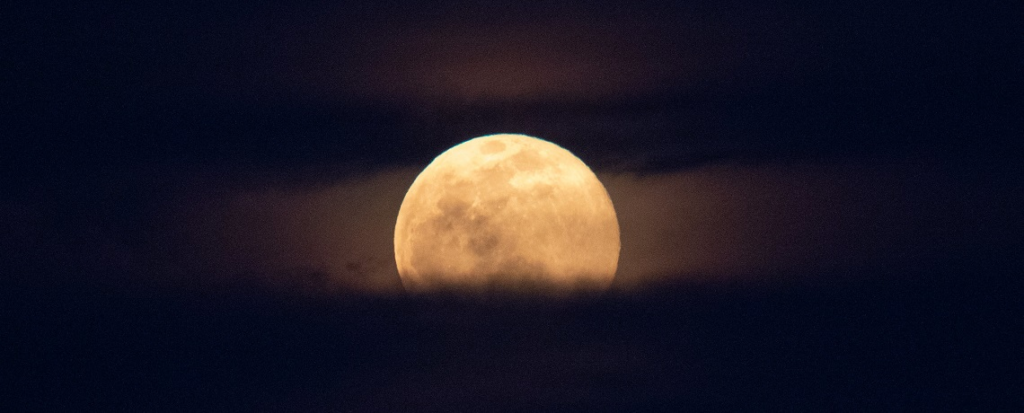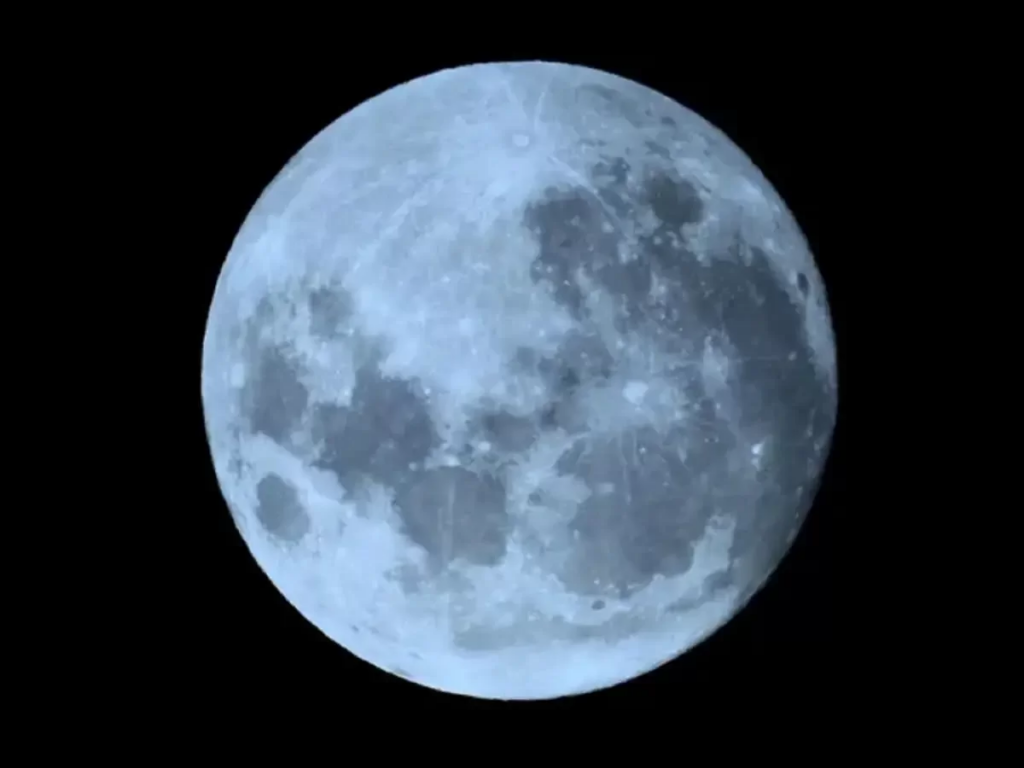Starry nights and the beauty of the sky have always fascinated us. Among the many celestial phenomena that capture our imagination, the supermoon certainly stands out. When the night star appears brighter and larger than usual, the atmosphere is flooded with an aura of magic and mystery. But what exactly is a supermoon? Why does it occur? And what impact does this phenomenon have on our lives and the world around us? Let's explore all these questions and uncover the secrets behind the supermoon.
What is a Supermoon?
A supermoon is an astronomical phenomenon in which the full moon coincides with the moment when it is closest to the Earth in its elliptical orbit. In other words, during a supermoon, the moon reaches its perigee point, which is the closest point to the Earth in its orbit around our planet. As a result, the moon appears significantly larger and brighter in the sky than on a typical full moon night.
The average distance between the Earth and the moon is approximately 384,400 kilometers. However, due to the elliptical nature of the lunar orbit, this distance varies over time. When the moon is at its perigee point, it can be around 356,400 kilometers away from the Earth, which represents a difference of around 28,000 kilometers from the average distance.
This physical proximity of the moon to the Earth during perigee is what creates the impressive visual effect of the supermoon. The moon appears noticeably larger and brighter in the sky, which attracts the attention of observers from all over the world. The dazzling beauty of the supermoon captivates not only astronomy enthusiasts, but also ordinary people who marvel at the immensity of the universe.
Why does the Supermoon happen?
The occurrence of the supermoon is the result of the complex interaction between the moon's orbit around the Earth and the gravitational forces involved in this process. To understand why the supermoon happens, you need to understand two fundamental concepts: the moon's elliptical orbit and the points of perigee and apogee.

Elliptical Orbit of the Moon: Contrary to what many people imagine, the moon's orbit around the Earth is not circular, but elliptical. This means that the moon does not move around the Earth in a perfect circle, but in an oval trajectory, where there is a point closest to the Earth (perigee) and a point furthest away (apogee).
Perigee and apogee points: Perigee is the point at which the moon is closest to the Earth in its elliptical orbit, while apogee is the point at which it is furthest away. These points vary over time due to the influence of various gravitational forces, including those of the Earth, the moon and the Sun.
When the moon is in its full moon phase and is simultaneously close to perigee, we have the phenomenon of the supermoon. This is because the moon's physical proximity to the Earth during perigee amplifies the visual effect of its luminosity and apparent size in the sky.
The gravitational forces exerted by the Earth and the moon influence the lunar orbit, causing it to oscillate between periods of greater proximity (perigee) and greater distance (apogee). These variations in the distance between the moon and the Earth result in supermoons occurring at regular intervals, usually a few times a year.
What makes the Supermoon so special?
The supermoon is considered special for several reasons, which go beyond its mere increased appearance in the sky. Here are some aspects that make this astronomical phenomenon so captivating and significant:
- Increased Size and Brightness: During a supermoon, the moon appears significantly larger and brighter than on an ordinary full moon night. This impressive visual effect is a result of the moon's physical proximity to the Earth during perigee. The moon can appear up to 14% larger and 30% brighter than on other full moon nights, making it a truly impressive celestial spectacle.
- Visual Beauty: The extraordinary magnitude and brightness of the supermoon give it an incomparable visual beauty. When the full moon appears on the horizon during a supermoon, its magnified size and intensified luminosity create a breathtaking scene. This natural beauty inspires awe and contemplation, connecting us with the vast and mysterious universe around us.
- Cultural and Historical Fascination: Throughout history, the moon has always exerted a powerful influence on the human imagination. Many cultures around the world have developed myths, legends and traditions around the moon and its different aspects. The supermoon, with its aura of grandeur and mystery, continues to inspire stories and narratives that enrich our understanding of the cosmos and our own existence.
- Connection with Nature: Observing the supermoon reminds us of our deep connection with nature and the universe. As we contemplate the majesty of the moon in its magnified form, we are invited to reflect on our place in the cosmos and to appreciate the beauty and wonder of the natural world around us. This sense of connection and reverence for nature can inspire us to care for planet Earth and preserve its beauty for future generations.
What is the impact of the Supermoon?
The impact of the supermoon is felt in many areas, from astronomical phenomena to subtle influences on the Earth.
- Tides: One of the most visible influences of the supermoon is on the tides. The moon's gravity exerts an attractive force on the Earth, which causes tides. When the moon is closer to the Earth during a supermoon, the gravitational force is slightly more intense, which can result in slightly higher tides than normal. Although the increase is usually modest and may not be noticeable everywhere, in some coastal regions or in areas with extreme tides, the effect of the supermoon on the tides may be more evident.
- Climate: Although there is no definitive scientific consensus, some studies suggest that the supermoon may be associated with extreme weather events, such as storms, floods or droughts. The theory behind this is that the position of the moon in relation to the Earth during a supermoon can influence atmospheric and weather patterns. However, it is important to note that the links between the supermoon and extreme weather events are complex and not yet fully understood by science.
- Astronomical observations: The supermoon offers an exceptional opportunity for amateur and professional astronomical observers to study the moon in detail. The increase in the size and brightness of the moon during a supermoon can make it easier to observe features on the lunar surface, such as craters, mountains and lunar seas. In addition, the supermoon can serve as an ideal time to carry out more general astronomical observations, taking advantage of the favorable atmospheric conditions and enhanced visibility.
- Public Interest in Astronomy: The supermoon often sparks a renewed interest and appreciation for astronomy among the general public. The phenomenon offers a unique opportunity for people to connect with the cosmos and explore the universe around us. Public events, such as organized observations or lectures on astronomy, often attract great interest during supermoons, allowing individuals of all ages to learn about and marvel at the wonders of space.
How to make the most of the Supermoon?
Making the most of the supermoon involves a combination of preparation, observation and appreciation.
Dates
Knowing the dates of the supermoons is essential for planning your observation and ensuring that you don't miss this astronomical spectacle. Supermoons occur several times a year, but not all of them are the same in terms of brightness and the apparent size of the moon.
- Astronomical calendars: There are several astronomical calendars available online and in the form of mobile apps that provide information on the dates and times of celestial phenomena, including supermoons. These calendars are great resources for keeping up to date with important astronomical events throughout the year.
- Observing resources: Websites and forums dedicated to astronomy often publish information on the dates of supermoons, along with tips on how to observe them and take photos. These resources can offer valuable insights for planning your own supermoon-watching experience.
- Specialized media: Magazines and publications specializing in astronomy often include information on the main celestial events of the year, including supermoons. Keep an eye out for articles and sections dedicated to observing the night sky to find out the dates of the supermoons and tips on how to best enjoy them.
- Local Observatories: Some local observatories offer special events during supermoons, including public observing sessions and talks on astronomy. Check to see if there are any observatories in your area and follow their schedule to stay on top of supermoon viewing opportunities.
- Social Networks and Online Communities: Online groups and communities dedicated to astronomy often share information about celestial events, including supermoons. Follow astronomy pages and profiles on social networks or join online forums and groups to stay informed and share experiences with other space enthusiasts.
Choose a suitable location
Choosing a suitable location to observe the supermoon is essential to ensure a satisfactory viewing experience without interference.
- Light pollution: Avoid areas with high light pollution, such as densely populated urban regions. Artificial lighting in cities can make it difficult to see the moon and reduce its visibility. Look for places away from urban lighting, such as parks, rural areas or secluded beaches, where the night sky is darker and the moon can shine in all its splendor.
- Obstructions on the Horizon: Choose a spot with an unobstructed view of the eastern horizon, where the moon will rise. Make sure there are no obstacles, such as tall buildings, trees or mountains, that could block your view of the moon as it rises in the sky. The wider your field of vision, the better your supermoon-watching experience will be.
- Safety and Access: Prioritize safe and accessible locations where you can enjoy the supermoon in comfort and tranquility. Avoid remote or dangerous areas at night and opt for well-lit places frequented by other people, if possible. Also, make sure that the location you choose is easily accessible, both for getting there and for leaving after the observation.
- Privacy and Intimacy: If you prefer a more intimate and private experience, choose secluded locations where you can enjoy the supermoon away from the hustle and bustle and crowds. Look for secluded areas, such as deserted beaches, remote trails or panoramic viewpoints, where you can enjoy the beauty of the moon in peace and quiet, away from outside interference.
Pay attention to the timetable
Check the moonrise time in your location. The supermoon is usually most impressive when it is close to the horizon, so try to observe it shortly after sunrise or before sunset. This allows you to appreciate the moon while it's low in the sky, which can create a stunning scene with earthly elements in the foreground.
Have observation equipment
Although it is possible to appreciate the supermoon with the naked eye, having a pair of binoculars or a telescope can intensify the experience. Observation equipment can reveal fascinating details of the lunar surface, such as craters, mountains and seas. Make sure you adjust your equipment properly to get the best views of the supermoon.

Take memorable photos
If you like photography, the supermoon offers an excellent opportunity to capture impressive images. Use a camera with exposure adjustment capabilities and manual settings to get the best results. Experiment with different compositions and angles to create unique and memorable photos of the supermoon.
Seize the moment
Finally, remember to simply enjoy the moment. Take some time to admire the beauty of the supermoon and reflect on the vast and mysterious universe in which we live. Share this experience with friends and family, and perhaps even organize a group observation to enjoy the supermoon together.
A fascinating phenomenon
The supermoon is a fascinating phenomenon that connects us to the vast and mysterious cosmos. As we observe this celestial spectacle, we are reminded of the beauty and grandeur of the universe we inhabit. So the next time a supermoon lights up the night sky, take a moment to appreciate its magnificence and reflect on our place in the cosmos.
See also: 10 best thriller movies you need to watch
April 1st, 2024

She has a degree in Literature - Portuguese/English, and is the creator of the Escritora de Sucesso website. As a writer, she seeks to expand everyone's knowledge with relevant information on various subjects. At Trend-Topics, she brings news and content ranging from entertainment to the country's economic situation.






